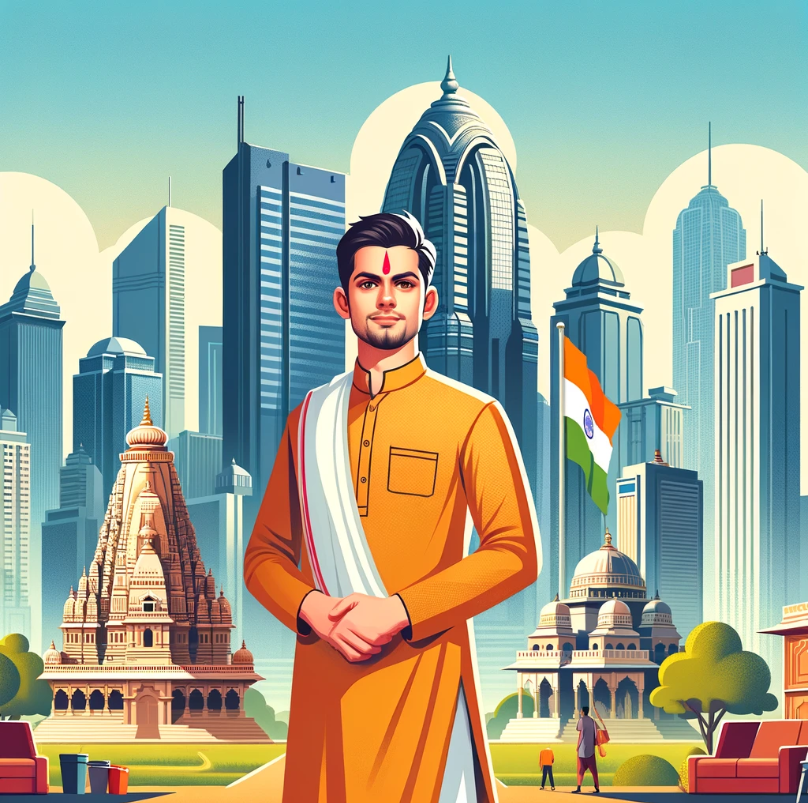How Tariffs, AI, and Robots Will Reshape Industry and Humanity
Tariffs are breaking old trade ties. AI and robots are rewriting the rules. The U.S.–China split is just the beginning of a new world map drawn in algorithms, not alliances.
The obsession and the rampant involvement of elite academic and media institutions in long-arc narrative building to shape, control and subvert the world may ultimately lead to their own downfall. It is visible already.


The hallowed halls of Harvard and MIT gave rise to an interesting idea. This idea that took shape there propelled the United States into one of the worst geopolitical quagmires of the 20th century.
The Vietnam War.
The Domino Theory, born of academia's fertile soil, posited that communism's "insidious spread" in one nation would unleash a devastating chain reaction throughout Southeast Asia. This notion was carefully crafted by scholars like Walt Rostow, a Harvard economist of considerable influence. His modernization theories wove a compelling narrative, linking economic progress to the very fabric of democracy.

Rostow's work ignited a sense of urgency, warning that inaction against communism's creep would invite global catastrophe. His words became the clarion call for U.S. intervention in Vietnam, as policymakers seized upon the notion that the fate of the Free World hung precariously in the balance. The specter of a communist Vietnam, they believed, would topple the delicate dominoes of democracy, plunging the region into darkness.
This Harvard-bred ideology took hold with tenacious force, driving the United States down a perilous path of military entanglement. The consequences would be dire, as the world bore witness to the unfolding tragedy of the Vietnam War. In the end, it was not the dominoes that fell, but the very fabric of American resolve, as the nation grappled with the ruinous costs of a war waged in the name of a theory.

But none of that could stop the juggernaut of American hubris. For it set into motion an addiction called Democracy.
At all costs.
Only to be faced with the greatest irony after losing the Vietnam
The country that created covert and overt institutions for planting democracies is today on the brink of losing its own.
At the altar of extreme leftist woke ideology.

A domino that boomeranged!
What we do takes a lot of work. So, if you like our content and value the work that we are doing, please do consider contributing to our expenses. Choose the USD equivalent amount in your own currency you are comfortable with.
The Elitist Institutions - both in Academia and Media - had a secret.
The Long Arc Narratives.
Yes, they were in the business of news reporting and academics. But they were also in the business of creating long-term narratives.
Whatever they were doing was informed and underlined with a purpose. That purpose was sought to be achieved by an almost invisible (to the public) layer of narratives that could be buried under the carpet of plausible deniability.
"The smart way to keep people passive and obedient is to strictly limit the spectrum of acceptable opinion, but allow very lively debate within that spectrum." - Noam Chomsky
What are the Long Arc Narratives?
In academia and media, long-arc narratives serve as a powerful tool for shaping public discourse, influencing cultural attitudes, and defining societal values.
The Long-Arc Narratives or Grand Narratives provide a compelling framework for understanding complex issues, long arc narratives influence public opinion and inform collective decision-making. This is achieved by such a narrative as they help shape a shared sense of identity, purpose, and belonging among individuals and groups within a society.
Some examples of Long Arc Narratives from the American experience could be:
Whether the American Dream was a sustainable dream or a drive to a nightmare, whether the War on Terror was actually a War for Profits, or the Civil Rights Movement was eventually a severely limiting experiment in the end for African Americans - are questions that one is left with today.
So to put it simply -
Long arc narratives can become powerful tools of PsyOps, embedding deep prejudices into the social psyche. These narratives don’t just inform—they shape perceptions, biases, and behaviors over time, aligning public sentiment with the goals of those in power. Whether through repetition, selective storytelling, emotional manipulation, or rewriting history, these stories can reinforce stereotypes and entrench divisions, influencing society at both the conscious and subconscious levels.
You see, PsyOps in the form of Long-Arc Narratives was delivered through the power of Ivy League Schools.
There was a collaboration.
Between the Ivy League Schools and the global recognition systems.
A Nobel Prize created the prestige. That prestige created the power to bestow legitimacy to others. Those who were awarded ensured the closed loop remained closed, loyal, and intact.
Despite path-breaking work in many areas, scientists at the IIT and the IISc were deliberately overlooked for the Nobel.
Here are some examples.
C.N.R. Rao and solid-state chemistry and nanomaterials: a professor and later Director at IISc, made pathbreaking contributions to materials science and solid-state chemistry, particularly in polymer science, superconductivity, and nanomaterials. He is one of the most cited scientists in the world, with an impressive body of research that has had a global impact.

Interestingly, Indian scientists who work in the Western Ivy League find it easier to win the Nobel Prize. These award regimes do not necessarily work against a certain race. It is about maintaining the power of certain institutions as the arbiters of power.
That is why the Nobel Prize committees did not recognize his work despite his contributions, possibly due to institutional biases and lack of visibility of Indian science within Western networks.
There are many such cases. The Indian Institute of Science (IISc) - India's premier institute of fundamental scientific research - has produced research of global importance, spanning spectroscopy, material science, climate science, epidemiology, and AI.
However, despite the quality and impact of their work, IISc professors and researchers have not been recognized with awards like the Nobel Prize due to systemic biases in the global awards ecosystem.
The narrative of intellectual superiority linked to these institutions has been perpetuated over decades through awards, academic networks, and influence in scientific communities, reinforcing global hierarchies of prestige and dominance. Below is an exploration of how these power structures operate and how bias in award regimes like the Nobel Prize has systematically excluded deserving non-Western institutions.
How did that impact and perpetuate Coloniality?
During the colonial era, European colonial powers established dominance not only through political control but also by shaping epistemological paradigms—that is, what knowledge is valued and how it is disseminated.
Institutions in the colonized world, such as IITs and IISc, were framed as peripheral to the "global centers of learning" in Europe and later the United States.
When the source of knowledge became the key factor in the recognition for that knowledge, the Ivy Leagues took on a bigger role.
Elite institutions like Harvard, MIT, Oxford, and Cambridge function as gatekeepers for global awards like the Nobel Prize.
They control the networks, research funding, and professional relationships that are crucial for receiving recognition.
And this gatekeeping bias means that certain knowledge paradigms take precedence over others.
Intellectual pursuits are not linear in nature. Seekers of knowledge have multiple perspectives to approach it. When only certain paradigms are provided the stamp of validity then such colonialism-inspired ecosystems create a much deeper bias and a skewed world of academia.
The Nobel Prize selection committees have a long history of favoring research aligned with Western paradigms or conducted by scholars with ties to Western institutions. This bias is particularly evident in the sciences, economics, and literature.
The Nobel Prize serves as more than just an acknowledgment of individual achievement—it reinforces the narrative of intellectual hegemony. The careful selection of laureates, it validates the dominance of the West over global knowledge production, marginalizing contributions from institutions like IITs and IISc.
The impact of hegemonical structures and PsyOps goes beyond mere academic maneuvering. It has a real-world impact.
Let us take the case of Harvard. Yes, it has impacted the American - and indeed the Western - culture and society in a very significant way. But another influence goes largely unnoticed.
It is Harvard's social power, its link to cliques, networks, and elites both real and imaginary.
This social power is not an innocuous one. It is very powerful and has resulted in global interventions in other countries.
A kind of internationalist interventionism long ago came to be a leading idea in Harvard's conception of foreign affairs. Samuel Eliot Morison once wrote that so many powerful Harvard men had helped start the Spanish-American War - including William Randolph Hearst, Henry Cabot Lodge and Theodore Roosevelt - that Harvard might say (as the Empress Eugenie reportedly said of the Franco-Prussian War), ''C'est ma guerre, c'est ma petite guerre a moi!'' David Halberstam, class of '55, related in ''The Best and the Brightest'' how many notable Harvard alumni advanced the idea of intervention in Vietnam. The spirit of interventionism has surfaced during the Reagan years, too. (Source: The Harvard Factor by Colin Campbell / New York Times)
What we need to fully comprehend is the nature of Ivy League-style global interventionism.
The long-arc narratives promoted by Ivy League and elite US and UK universities have profoundly influenced global interventionism by shaping how conflicts, economic policies, and social hierarchies are framed. Through their intellectual dominance, these institutions have provided the ideological justifications for wars, financial interventions, intelligence operations, and humanitarian efforts, often steeped in prejudices about race, culture, and governance.
These narratives serve as PsyOps on both domestic and global audiences, creating moral frameworks that make intervention seem inevitable and justified.
Please read a detailed take on the power of Harvard over the years for a better perspective.

Understanding how these narratives crafted by the academia operate helps unravel the complex relationships between academia, power, and society, revealing the subtle ways in which knowledge and influence intertwine to shape global realities.
Now, let us look at all the ways that these Ivy Leagues have actioned their Global Interventionism agenda.
Ivy League schools in the United States and elite universities such as Oxford and Cambridge in the United Kingdom have, over time, played influential roles in global interventionism, often shaped by long-arc narratives steeped in cultural, racial, and ideological prejudices.
These academic institutions are not merely centers of learning; they have been deeply entangled with imperial, geopolitical, and financial power structures, creating narratives that have justified and enabled interventions worldwide.
Ivy League and UK elite universities have served as intellectual factories for the ideologies of interventionism, providing an academic veneer for imperial conquests, wars, and economic exploitation.

The primacy of one set of paradigms necessitated that the "other" narratives be clothed in ways that make them sound interesting and esoteric however devoid of any substantive gravitas.
That is the origin of the concept of "orientalism" and its corollaries.
The creation and perpetuation of Orientalism—a framework that portrays non-Western societies as exotic, primitive, or despotic—has roots in the scholarship of elite universities in the UK and the US. Such narratives paved the way for military, economic, and cultural interventions.
Please do read this previous edition for a good understanding of what such narratives signify.

These colonial structures and narratives were further backed by the International financial infrastructure and institutions.
Graduates and scholars from Ivy League and elite UK universities have historically shaped the creation and functioning of international financial institutions (IFIs) like the International Monetary Fund (IMF) and World Bank. These institutions, in turn, have been used as tools of economic interventionism.
Enough studies have confirmed this fact.
Although the International Monetary Fund (IMF) claims that poverty reduction is one of its objectives, some studies show that IMF borrower countries experience higher rates of poverty. This paper investigates the effects of IMF loan conditions on poverty. Using a sample of 81 developing countries from 1986 to 2016, we find that IMF loan arrangements containing structural reforms contribute to more people getting trapped in the poverty cycle, as the reforms involve deep and comprehensive changes that tend to raise unemployment, lower government revenue, increase costs of basic services, and restructure tax collection, pensions, and social security programmes. Conversely, we observe that loan arrangements promoting stabilisation reforms have less impact on the poor because borrower states hold more discretion over their macroeconomic targets. Further, we disaggregate structural reforms to identify the particular policies that increase poverty. Our findings are robust to different specifications and indicate how IMF loan arrangements affect poverty in the developing world. (Source: The effects of IMF loan conditions on poverty in the developing world / Glen Biglaiser and Ronald J. McGauvran
These financial interventions were rationalized through narratives of progress, development, and modernization, masking the ways they entrenched Western economic dominance.
Elite universities have long functioned as recruitment grounds for intelligence agencies, diplomats, and policy elites, ensuring that interventions align with national interests disguised under broader ideological goals.
The close-knit elite group works together in a mass quid-pro-quo chain to help each other out. That is what many term the Deep State.
In the mid-century, elites followed a social script defined by a sense of American destiny underpinned in part by patronage networks at Yale and elsewhere. This culture taught enterprising students to value tradition, hierarchy, and institutions with missions greater than the ambitions of any one individual. It is no surprise, then, that public service was such a common career path for Bonesmen. Yale’s best, brightest, and most well-connected students graduating from Bones were funneled into pipelines to work in the CIA and the State Department, institutions that valued intense loyalty, brotherhood, and hierarchy—virtues which Bonesmen shared in abundance. (Source: The Lost Virtue of Skull and Bones / Palladium Mag)
So you see, the seamless transfer of academic influence into the halls of power ensures that long-arc narratives shape real-world interventions, framing them as diplomatic or intelligence necessities.
The cultural and intellectual dominance of Ivy League and elite UK universities often reinforces global inequalities through narratives that perpetuate racial and class hierarchies. Graduates, who go on to occupy leadership positions, promote policies and ideas that maintain social stratification.
These narratives create a long arc of prejudice that supports interventionism under the pretext of development, education, or governance.
Elite universities heavily influence media narratives, with graduates often occupying key positions in journalism and publishing. These media outlets perpetuate interventionist biases by amplifying the narratives constructed in academic circles.
A real-life example of the most insidious role played by media was that of how the New York Times provided justification to Hitler for his attack on Poland. An act that started the World War II. Read about that and the dubious history of the New York Times in detail.

The collaboration between elite academia and media ensures that interventionist narratives are deeply embedded in public discourse, influencing how societies perceive conflicts, interventions, and foreign policies.
So what is carefully crafted by the academia is distributed and amplified by the media.
In that sense, academia and the media go together in forming narratives within a society and subverting or controlling the minds of its population.
This is a good segue for us to look at the role of the media or what was known as "journalism" until the advent of social media.
Long-arc narrative journalism—stories that unfold over time and shape perceptions—has been used strategically to influence and subvert societies by framing conflicts and interventions in ways that serve geopolitical agendas.
Long arc narratives often frame stories around protagonists and antagonists, reinforcing an “Us vs. Them” mentality. Governments, media outlets, or institutions running PsyOps leverage this format to paint certain groups—whether political, ethnic, or religious—as threats or enemies.
Long-form journalism can tell personal, emotionally charged stories that build sympathy or hatred for specific groups or ideologies. By focusing heavily on certain types of stories—whether about crime, terrorism, or poverty—media can perpetuate stereotypes and engineer public opinion.
Narratives that unfold over a long arc are powerful tools for shaping collective memory. They don’t just report events but shape the way those events are remembered and understood over generations, sometimes embedding historical prejudices or false narratives.
We have discussed the experiments into "Made to Order Brahmins" by the British rulers and how they constructed the whole narrative of the caste system when something very different was prevalent - as is the case in most societies.

What isn’t reported is just as important as what is. By focusing on certain events and excluding others, long arc journalism can create an illusion of reality that aligns with hidden agendas. This selective storytelling influences how populations perceive the world’s conflicts, injustices, or social changes.
Long arc narratives also normalize certain social hierarchies or prejudices by repetition—a key aspect of PsyOps. If the public is exposed to certain prejudices over time, they become normalized and woven into the social fabric.
Let us take an example.
Chandrayaan-3 is an Indian Space Research Organization mission that landed near the south pole of the Moon on Aug. 23, 2023. It was a tremendous scientific achievement of India's space scientists.
Interetingly that set of a series of reactions from the British showed the deep-rooted racism and colonial hangover that is still prevalent there.
For example - Paul Golding, a British politician and leader of the British First political party shared his thoughts on X.
Well done India on the success of your space programme.
— Paul Golding (@GoldingBF) July 14, 2023
And shame on UK politicians who keep unnecessarily giving India tens of millions of pounds in ‘foreign aid’. pic.twitter.com/1IlgghCsqi
Harvey Proctor, a Member of Parliament and Private Secretary to some obscure duke (Duke of Rutland) chimed in.
There are estimates that around £2.3 billion in UK aid went to India between 2016 and 2021.
— Harvey Proctor (@KHarveyProctor) July 14, 2023
If India can afford to send a rocket to land on the moon, I think all overseas aid to India should be redirected. pic.twitter.com/7PrNYzEGHc
This came at the heels of the report of a Commission that looked at the performance of British International Investment (BII) - known as a development finance institution. It's a successor to the Colonial Development Corporation that was set up after the colonial withdrawal by the British. A kind of continuing extension of the "white man's burden".
Apparently, this BII had provided 2.3 billion pounds of aid money to India between 2016 and 2021.

But was it really aid?
Remember that India had rejected British aid in 2012 saying it's "peanuts" anyway.

After the publishing of the report that promoted the aid to India trope, the Foreign Office in Britain confirmed that the so-called £2.3 billion aid was actually a business investment.
A Foreign Office spokesperson said: “Since 2015 the UK has given no financial aid to the government of India. Most of our funding now is focused on business investments which help create new markets and jobs for the UK, as well as India. UK investments are also helping tackle shared challenges such as climate change.” (Source: UK aid to India does little for human rights and democracy, watchdog finds / The Guardian)
Shashi Tharoor put the significance of even this "British aid" very appropriately in his now famous speech at Oxford reminiscing the British depredations in India during its colonial rule.
You can watch that speech which gives interesting details that we have covered as well in our previous newsletters (British Opulence and Imperial Taproots and Why is the West Rich?) on how British opulence was built upon the wealth it plundered from India.
As far as BII investments in India are concerned it prefers to invest in social media platforms where sexual services are offered and the October 6th Hamas attack on Israel was eulogized.
Apart from investing in cosmetics businesses as well.
That's all you need to know about the significance of British aid to India!
Development aid?!

Now, the Indian media is not the reticent and shy media of yore. It has a voice and a mind of its own. And, it can put things in context and play them back.
Here is how Palki Sharma, one of my favorite journalists (for her rigor and storytelling) sets the context and tone relative to the foreign aid rants.
The shaming of the "poor Indians" has been going on for a long time. It is only now that Indians are responding back and setting the record straight.
But, do you see how long-arc narrative journalism works?
How will it work out for these elite academic and media institutions that have been hoisted on the world as centers of excellence?
The obsession of elite Western academic and media institutions with long-arc narratives—often aligned with specific political ideologies and subversive agendas—has led to public distrust and institutional decay.
These institutions, once powerful, are now seen as biased, disconnected, and politically compromised.
The rise and fall of Claudine Gay as Harvard’s president reflects a deeper crisis facing elite academic institutions. Her brief tenure was marked by intense political scrutiny, plagiarism accusations, and Harvard's entanglement in divisive cultural debates. This episode showcases how academic institutions, increasingly consumed by ideological battles, struggle to maintain credibility and stability. The fallout highlights the erosion of public trust and governance challenges within such universities, signaling that their obsession with politics and optics may create a vacuum for new, technology-driven institutions to emerge with clearer, unbiased agendas.
The stage is now set for new educational and journalistic models to emerge, powered by internet platforms, AI, and machine learning.
Decentralized, transparent, and data-driven institutions could potentially replace these elite bastions, offering more objective and inclusive reporting and education in the future.
This shift reflects a broader desire for systems that prioritize truth and integrity over ideological agendas, positioning new technologies to disrupt entrenched power structures.
The very configuration of elitism may be changing in the coming decades.